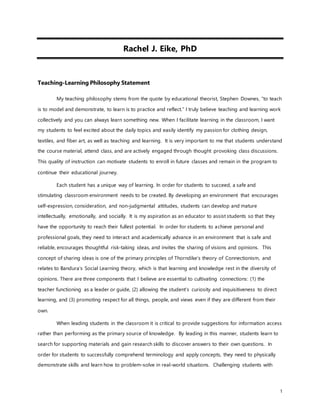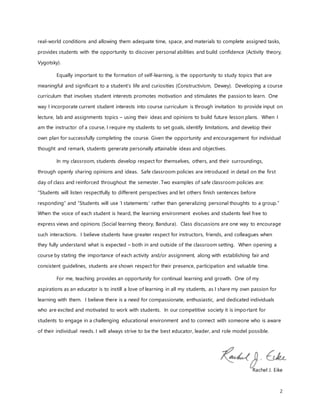The author believes that teaching and learning work collectively, with the teacher modeling and demonstrating concepts for students to then practice and reflect on. The teacher aims to create a safe, stimulating classroom environment where students feel comfortable sharing ideas and opinions. There are three key components to cultivating connections between students: the teacher acts as a guide, students direct their own learning through curiosity, and all views are respected. The teacher provides suggestions for information rather than being the sole source of knowledge, allowing students to develop research skills. Students learn best when applying concepts to real-world problems and having time to discover their abilities. Developing curriculum involving student interests promotes motivation to learn.

